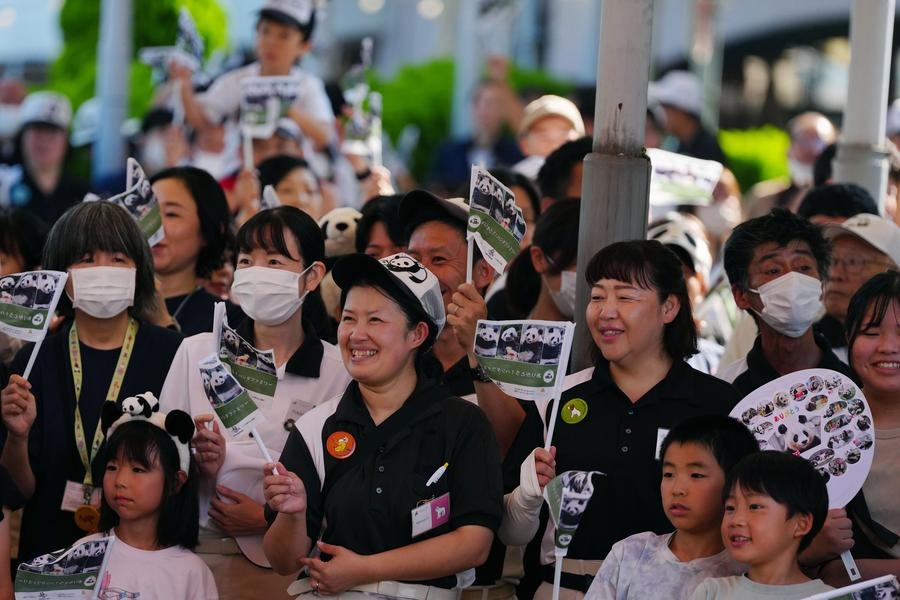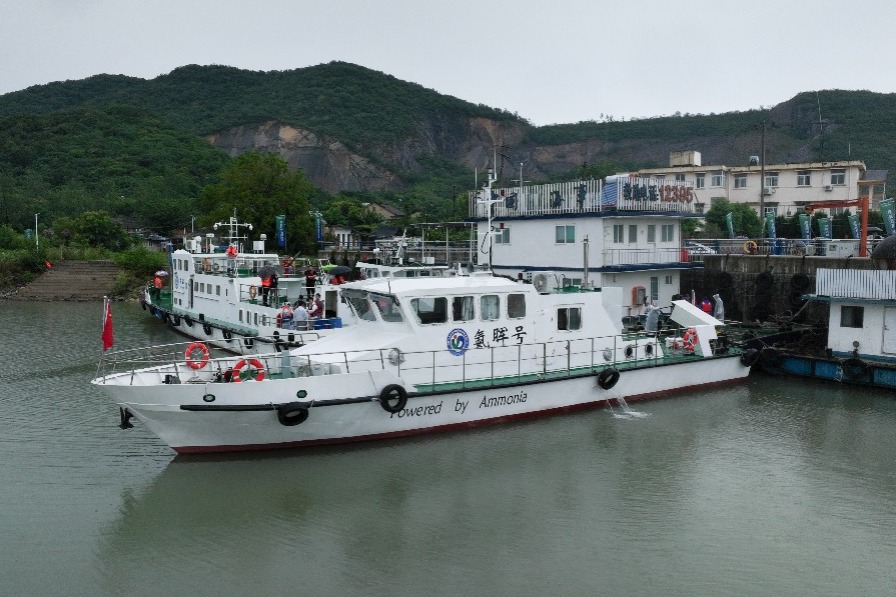Jiangxi's Red bases 'in their prime'
Region's meteoric development, enhanced ties with neighboring economic zones present continued opportunities

Editor's note: China has seen tremendous changes nationwide, from economic growth to environmental protection, from social improvement to cultural progress. In this series, China Daily maps the changes and tells the stories of the people who lived through them.

Jiangxi, the eastern Chinese province heir to a glorious early 20th century revolutionary history, has embraced a new phase of development over the past decade thanks to favorable policies, as well as its inhabitants' efforts.
Between 2012 and 2021, the GDP in the province, which is home to more than 45 million residents, increased by 229 percent to 2.96 trillion yuan ($439 billion), according to the Jiangxi Provincial Bureau of Statistics.
"Over the past decade, the province's GDP has grown at an average of 8.4 percent annually, taking it from 19th to 15th place nationally," said Yi Lianhong, secretary of the Jiangxi Provincial Committee of the Communist Party of China, stressing that the fast-growing economy has drastically changed life, especially in the old revolutionary bases.
These are the areas where the Communist Party of China strengthened its revolutionary cause before the founding of New China. Jiangxi, which is traversed by the Yangtze River, had bases in its southern regions.
Between 1929 and 1934, most parts of southern Jiangxi belonged to the revolutionary bases. In November 1931, the Provisional Central Government of the Chinese Soviet Republic was founded in Ruijin in Ganzhou city, a milestone that signified the official establishment of the Central Revolutionary Base.
However, the economic development of the bases lagged far behind the national average over the following decades due to a number of factors, including poor environmental and living conditions, a lack of transportation and a weak industrial structure.
That picture has changed significantly, particularly in the past decade, as China's top policymakers have given priority to old revolutionary bases to narrow social inequality and regional growth gaps. In 2012, the State Council, China's Cabinet, issued a guideline on supporting the vitalization and development of former central revolutionary base areas.
President Xi Jinping, who is also general secretary of the CPC Central Committee, emphasized during two inspection trips to Jiangxi over the past decade that the development of old revolutionary bases, especially the former Central Revolutionary Base, should be accelerated. He added that people living in those areas should not be left behind in the process of "building a moderately prosperous society in all respects".
Over the past decade, Jiangxi has lifted all its 25 impoverished counties from the poverty list, 21 of which were located in the former Central Revolutionary Base, where 2.4 million people escaped absolute poverty, Yi said.
"In addition, all 2,104 poverty-stricken villages in our former Central Revolutionary Base have been lifted out of poverty," he said, noting that the previous difficulties in accessing housing, drinking water, transportation, education and medical services, which had plagued people in southern Jiangxi for a long time, have been eradicated.
The support for poverty alleviation came not only from policies, but also from society, according to Ye Jianchun, governor of Jiangxi. "There are over 4,100 private businesses partnering with thousands of villages to carry out targeted poverty alleviation," he said.

The fight against poverty continues, and Jiangxi has been improving follow-up monitoring of any trends that might indicate a relapse, Ye said.
Monitors regularly check on key groups-including those experiencing financial difficulties and who are unable to meet their basic needs due to illness, disasters or accidents, or due to a sharp drop in income-to prevent them from relapsing, according to a white paper released by the State Council Information Office last year.
Jiangxi has also harnessed its advantages in terms of valuable resources, especially rare earths, a group of 17 elements used in the manufacture of items from wind turbines and mobile phones to LED lights and televisions. China is the world's largest exporter and largest source of rare earths.
Last year, the country formalized the creation of the China Rare Earth Group, which is headquartered in South Jiangxi's Ganzhou, a former Central Revolutionary Base city which has become a major rare earth production hub. The establishment of the giant State-owned enterprise marked the first time that an SOE was headquartered in the province.
During the next phase of development, maintaining high-level opening-up is a key task for the inland province.
According to Yi, Jiangxi will strengthen the exchange and integration between its southern region and the Greater Bay Area, and between its northeastern region and the Yangtze River Delta region, which includes Shanghai, Nanjing in Jiangsu province and Hangzhou in Zhejiang province.
"The former revolutionary areas are not old at all, but are in their prime," Yi said. "We will continue to seize opportunities and promote high-quality development in the future."

























